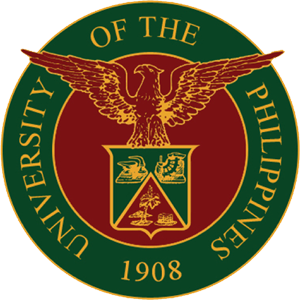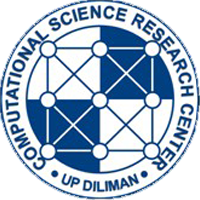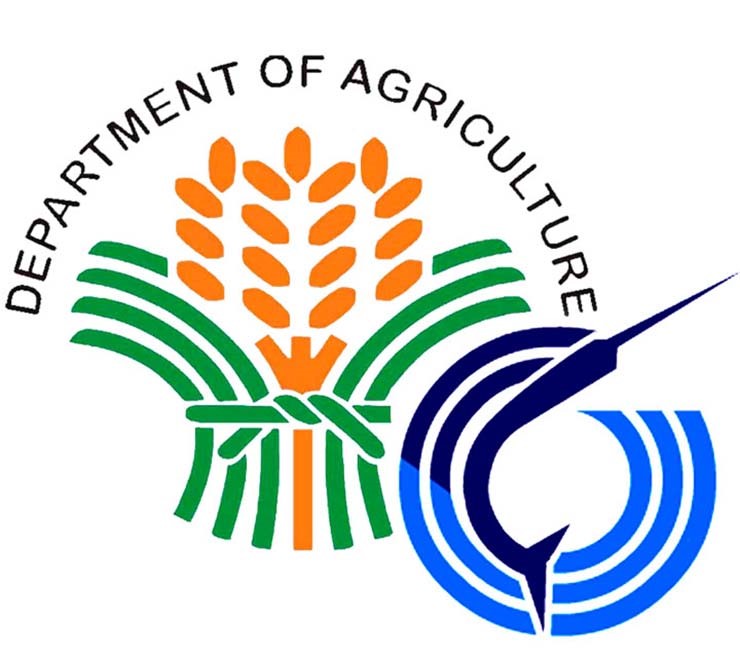Laboratory for Genomic Effects on Nature by Environmental Stressors (GENES)

Goal
The goals of the Laboratory for Genomics Effects on Nature by Environmental Stressors are to understand the molecular mechanisms by which environmental stressors cause diseases in marine and terrestrial organisms and to develop biotechnologies that can help abrogate ecological disruption by anthropogenic pollutants. We use a translational research approach by integrating field studies with laboratory studies in order to identify field-validated stress-specific biomarkers of stress-induced diseases. Field-validated stress-specific biomarkers will be used to develop molecular diagnostics to pinpoint and stop pollutants before they cause irreversible damage. Our current interests include elucidating the molecular mechanisms by which anthropogenic pollutants and stressors cause bleaching of coral reefs and the development of an early warning system that can identify point sources of pollutants. Fieldwork and laboratory work involve high-throughput approaches utilizing genomic, metagenomic, transcriptomic, proteomic and metabolomic technologies in the context of geospatial maps followed by computational analysis.
Research Interest
Coral Bleaching
Philippine coral reefs have the highest biodiversity in the world. Coral reefs contribute PHP 67.5 billion annually for the Philippine economy by creating coral reef fisheries, attracting tourists, protecting Philippine coastal communities from erosion, and by creating jobs for over a million small scale fishers and the poor. Alarmingly, Philippine coral reefs also experience the world’s highest threat level to extinction by climate change and manmade pollutants. Philippine government policy makers state that they can do little to protect this national treasure and resource citing the lack of suitable metrics to help guide policy and the protection of reefs and coastal ecosystems.
The Laboratory for Genomic Effects on Nature by Environmental Stressors studies the molecular mechanisms by which anthropogenic pollutants induce coral bleaching in order to identify new and superior metrics that can pinpoint and stop pollutants before rather than after irreversible bleaching and damage to coral reefs occur. We are approaching this through several projects.
Identification of field-validated stress-specific molecular biomarkers associated with bleaching of clownfish-hosting sea anemones
Study site
We identified Puerto Princesa Bay as one of the world’s ideal study sites to study coral bleaching since it has healthy coral reefs adjacent to an area experiencing sudden and explosive urbanization. Because many of the pollutants are new, Puerto Princesa Bay allows us to disambiguate the complexities of the environment and identify new point sources of manmade pollution for identification of field-validated stress-specific biomarkers.

Study organism
We study clownfish-hosting sea anemones in the field which are much easier to find and identify during the limited underwater airtime throughout SCUBA. Clownfish-hosting sea anemones, like hard coral, are Cnidarians that experience bleaching through the same mechanisms. Unlike hard coral, which for technical reasons are notoriously difficult to study underwater, clownfish-hosting sea anemones enable us to track and profile hundreds of samples in one field study. Help Nemo help us to save our coral reefs!

Field work
GPS mapping of bleached and unbleached clownfish-hosting sea anemones in Puerto Princesa Bay, Palawan
We track and profile hundreds of bleached and unbleached clownfish-hosting sea anemones encountered in a single field survey by scientific reconnaissance dives. Join our laboratory and enjoy hundreds of fun dives for free!

Sonar mapping
In addition to profiling molecular changes in the context of 2-dimensional maps of environmental parameters, we map the sea bottom to obtain 3-dimensional insights into the causes of bleaching. For example, there could be more bleaching within this underwater channel from sediments carrying farming chemicals after rain events.

Laboratory work
Aquarium studies
In parallel to our field studies, we conduct laboratory aquarium studies on both clownfish-hosting sea anemones and a model sea anemone with controlled amounts of stressor. Combining our laboratory experiments with the field studies yield cross-validating results with real-world relevance.

Genomics, Metagenomics, and Transcriptomics
We use the high-throughput technologies at the Philippine Genome Center to profile changes in DNA and RNA in response to bleach-inducing stressors in order to identify biomarkers. These biomarkers help us to understand the biological mechanisms involved in bleaching. The biomarkers can also be used to develop molecular diagnostic kits that that will help guide policy makers and coastal ecosystem managers.

Proteomics
We also look for proteins that can be used as stress-specific biomarkers for the onset of bleaching.

Metabolomics
We also study metabolic biomarkers that can be used as stress-specific biomarkers for the onset of bleaching.

Computational analysis
GIS
A significant part of our work involves computational analysis of our field work through Graphical Information Systems software. Geospatial mapping of our GPS-referenced sea anemones, sonar maps, multiparameter surveys, satellite imagery, and our terrestrial surveys gives us insights by interpreting molecular results in the context of the environment over space and time.

Bioinformatics
High-throughput technologies such as genomics, metagenomics, transcriptomics, proteomics and metabolomics generate millions of data points that must be analyzed. Bioinformatics transforms these data into knowledge which in turn can be turned into action.

Cambrian Explosion
A side project is our interest in the Cambrian Explosion resulted in a sudden burst in biodiversity of marine life 500 million years ago. Complex organisms such as trilobites suddenly appeared. We have a hypothesis that a disease-causing environmental stressor catalyzed the Cambrian Explosion which can be bioinformatically tested by mining the ever-growing phylogeny of genomic databases.

- Young AT (2019) Creating a roadmap for building a sustainable genomics facility in the Philippines Philippine Journal of Science 148 (S1): 15-32
- Briones YL, MR Castro, RD Jalandoni, HN Adorna, JA Dizon and AT Young (2019 in press) A directed minimum connected dominating set for protein-protein interaction networks Theory and Practice of Computation, Proceedings of the Workshop on Computation: Theory and Practice (WCTP 2019) September 26 - 27, 2019 Manila, The Philippines (London, CRC Press)
- Young AT et al (in preparation) High resolution geospatial mapping of clownfish-hosting sea anemones associates bleaching with petroleum hydrocarbon BTEX: Bioinformatic prediction of potential petroleum hydrocarbon stress-specific molecular biomarkers
- Young AT (2018) Applying technologies from the biomedical industry to marine biology (Abstract only and talk) 3rd International Conference on West Philippine Sea (Puerto Princesa) May 3, 2018
- Young AT and L Creencia (2014) High resolution geospatial mapping of bleached sea anemones (Heteractis) and correlation to anthropogenic stress from sedimentation, farming, and petroleum hydrocarbons (Abstract only and talk) 1st International Conference on West Philippine Sea (Puerto Princesa) February 21, 2014
- Young A (2011) Pursuing next-generation therapeutic antibodies as the next source of blockbuster drugs Spectrum, Discovery and Innovation: Technologies, Strategies, and Dealmaking, Decision Resources June 2011
- Young A and BM Bolten (2009) Riding the biotech economic tsunami—Surfing to safety or wipeout? Spectrum, Drug Discovery and Design, Decision Resources May 2009 4: 1-35
- Young A (2009) Insights into platform technology and early-stage pipeline mergers and acquisitions Spectrum, Drug Discovery and Design, Decision Resources March 30, 2009 2: 1-22
- Young A and BM Bolten (2008) Fueling the drug discovery engine: Biotech investment and business trends Spectrum, Drug Discovery and Design, Decision Resources June 2008 5: 1-48
- Young A (2007) Challenges for a maturing biotechnology industry: Evolve or perish Spectrum Pharmaceutical Industry Dynamics, Decision Resources August 2007 10: 1-22
- Young A and B Bolten (2007) Pharma antes up: Investment and business trends driving biotechnology (2006) Spectrum Pharmaceutical Industry Dynamics, Decision Resources June 2007 5: 1-26
- Young A (2006) Translational medicine: Assessing the feasibility and challenges review Spectrum, Drug Discovery and Design, Decision Resources September 2006 7: 1-20
- Young A (2006) Who’s buying what in biotech? Investment and business trends driving biotechnology Spectrum, Drug Discovery and Design, Decision Resources April 2006 3: 1-23
- Young A and B Bolten (2005) Investment and business trends in biotechnology: 2004 in review Spectrum, Drug Discovery and Design, Decision Resources March 2005 2: 1-18
- Young A (2005) Obesity and drug discovery: Success and challenges for a new pharmaceutical market Spectrum, Drug Discovery and Design, Decision Resources June 2005 4: 1-19
- Young A (2004) Biodefense opportunities in the biotechnology and pharmaceutical industries Spectrum, Drug Discovery and Design, Decision Resources July 2004 6: 1-21
- Young A and B Bolten (2004) Corporate investment and business trends in biotechnology: 2003 in review Spectrum, Drug Discovery and Design, Decision Resources April 2004 3: 1-24
- Young A and B Bolten (2003) Corporate investment and business trends in biotechnology: 2002 in review Spectrum, Drug Discovery and Design, Decision Resources March 2003 3: 1-18
- Young A and B Bolten (2002) Corporate investment and business trends in biotechnology: 2001 in review Spectrum, Drug Discovery and Design, Decision Resources March 2002 2: 1-18
- Young A (1999) The race to create and capture value from genomics Spectrum, Drug Discovery and Design Decision Resources October 1999
- Young A (1999) Current and future trends in drug discovery Chapter 4 pp89-104 (eds. Haberman AB, GR Lenz and D Vaccaro) (Decision Resources, Waltham, MA)
- Young A and A Regalado (1998) Proteomics: Emergence of a new technology for drug discovery and development Spectrum Drug Discovery and Design March 26, 1999
- Young AT, J Dahl, Hausdorff SF, Bauer P, MJ Birnbaum and TL Benjamin (1995) Phosphatidylinositol 3-kinase binding to polyoma virus middle tumor antigen mediates elevation of glucose transport by increasing translocation of the GLUT1 transporter Proc Natl Acad Sci USA 92: 11613-11617 Impact Factor 10.4
- Young AT (1993) Gene therapy using targeted viral vectors Patent Cooperation Treaty, World Intellectual Property Organization
- Talmage D, R Freund, AT Young, J Dahl, C Dawe, and TL Benjamin (1989) Phosphorylation of middle T by pp60csrc: A switch for binding of phosphatidylinositol 3-kinase and optimal tumorigenesis Cell 59: 55-65 Impact Factor 31
- Lips DL, PW Majerus, FR Gorga, AT Young and TL Benjamin (1989) Phosphatidylinositol 3phosphate is present in normal and transformed fibroblasts and is resistant to hydrolysis by bovine brain phospholipase C II J Biol Chem 264: 8759-8763 Impact Factor 4
- Young AT, D Talmage, R Freund, C Dawe and TL Benjamin (1988) Phosphorylation of polyoma virus middle T on tyrosine 315 is required for efficient tumor induction and for association with type I phosphatidylinositol kinase activity (Abstract) Cold Spring Harbor Meeting on SV40, Polyoma, and Adenoviruses
- Linemeyer DL, JG Menke, A Martin-Gallardo, JV Hughes, AT Young and SW Mitra (1985) Molecular cloning and partial sequencing of hepatitis A viral cDNA J Virology 54: 247- 255 Impact Factor 5
- Stiles JI, JW Szostak, AT Young, R Wu, S Consaul and F Sherman (1981) DNA sequence of a mutation in the leader region of the yeast iso-1-cytochrome c mRNA Cell 25: 277-284 Impact Factor 31
- Yang RCA, AT Young, and R Wu (1981) BK virus DNA sequence coding for the t and T antigens and evaluation of methods for determining sequence homology J Virology 34: 416-430 Impact Factor 5
Professor Young is IESM’s newest faculty member and the University of the Philippine-Diliman’s first Professorial Fellow, especially created to allow foreigners to hold a faculty position to conduct fulltime research at the University of the Philippines. Trained in the biomedical sciences with both academic (genomics, signal transduction pathways) and business experience (venture capital investments and business development in genomic and transcriptomics-based drug discovery), Dr. Young came to the Philippines to graduate from programs that save people (biomedical sciences) to programs that save the planet (environmental biotechnology). The Philippines is the number one location in the world for marine biodiversity. Dr. Young combines both field studies and advanced high-throughput technologies to study mechanisms of coral bleaching and to develop molecular diagnostics
Research Projects:
- Geospatial GPS mapping of bleached and unbleached coral reef organisms in Puerto Princesa Bay, Palawan to identify field-validated, stress-specific biomarkers of coral bleaching
- Genomic, transcriptomic, proteomic, and metabolomic profiling of a model organism for coral bleaching exposed to anthropogenic stressors
- Application of bioinformatics to genomic, transcriptomic, proteomic, and metabolomic studies of coral bleaching to identify stress-specific biomarkers
- Profiling of microplastic pollution in Manila Bay from the Pasig River
- Microplastic effects on coral reef organisms









